On October 14, 2021 sustainability experts, futurists and passionate members of the St James Town (SJT) community came together to discover and share actionable solutions to the escalating impacts of climate change on urban high-rise communities in the Greater Toronto Area.
Breaking into Solutions Discovery Groups, participants focused on seven climate-related challenges: Food, Shelter, Energy, Jobs, Emergency Preparedness, Health, and Connectivity.
Residents submitted their proposals in these areas and were and were assigned mentors to explore and work towards pilot projects related to each category. The agenda also included keynote talks, four Solutions Discovery Group presentations, followed by open forum discussions.
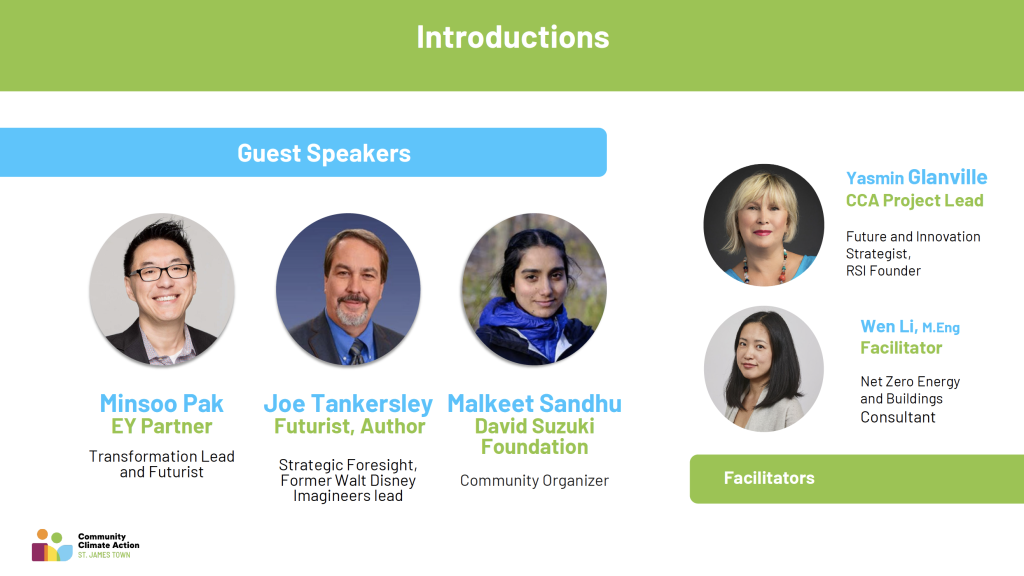
Speakers
Minsoo Pak, transformation specialist and futurist partner at EY International Consultants.
Joe Tankersley accomplished futurist and author of Reimagining Our Tomorrows. He formerly led the Strategic Foresight group for Walt Disney Imagineering and is a thought leadership contributor for Rethink Sustainability Initiatives (RSI).
Malkeet Sandhu, community organizer at the David Suzuki Foundation. As part of the sustainable communities’ team, her work focuses on helping municipalities in the 905 region to reduce their emissions.
Introduction
RSI Founder Yasmin Glanville, who is also a Future and Innovation Strategist explained how this workshop is to discover and explore climate action solutions to build a more inclusive, healthy, equitable, sustainable and resilient world — starting at the community level. Working in silos is not as productive as connecting groups/ideas/needs/solutions.
Keynote 1: Step into a Reimagined Future
Minsoo Pak explained the idea of futuring — how it lets us plan effectively, avoid disruption and take the necessary steps to create an ideal state.
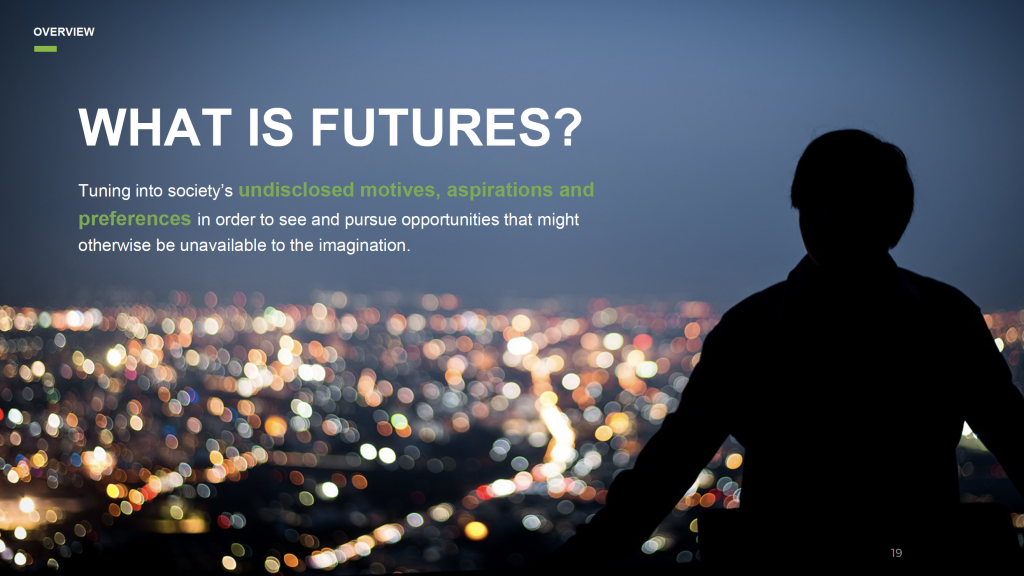
In this era of unprecedented challenge and disruption, futuring helps us find the best way forward — by anticipating, designing and building.
By tuning into society’s needs and wants to create an ideal future we can narrow down the choices, from what’s possible to what’s plausible and what’s probable.
This vision can be difficult to define, but if we figure it out we can build it and act. We need to consider the social, technological, economic, environmental and political roles that will be in that vision.
Joe Tankersley talked about the notion of futuring using old maps as a metaphor for planning. Long before Siri and Google, maps inspired adventurers to go off and create the world as we know it.
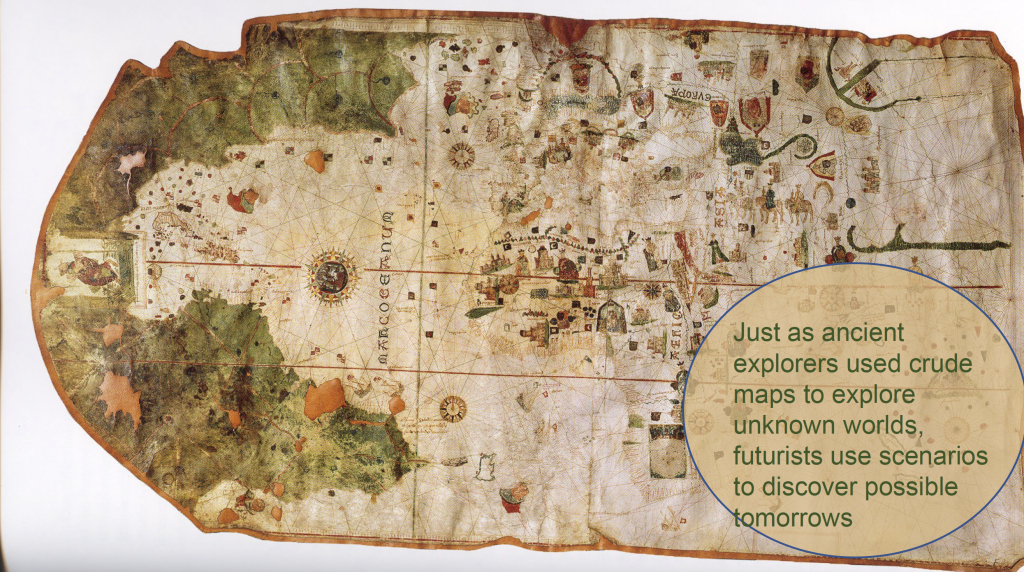
The maps may have been missing information, but they got people going in the right direction. They were living documents that were updated with the return of each adventurer.
Futurists are constantly updating their maps of the future. Connecting the metaphor to climate change, Joe likened it to the sea monsters on a map; we have to develop strategies to deal with the monsters to get where we want to go.
Creating a map that will take us to our preferred, sustainable future will inform, inspire and empower us. Narrative storytelling binds people together.

After the presentations, Minsoo and Joe took questions.
Keynote 2: Climate Justice, Health and the Economy
Malkeet Sandhu is a community organizer with the Canadian environmental group David Suzuki Foundation, helping bridge the gap between the public and the municipalities.
Keynote 2: A tale of two crises
Malkeet began by sharing data on how the COVID-19 crisis has hit communities like St. James Town harder, with more infections and lower vaccination rates. The dual effect of unequal access to solutions and a higher risk of infection is clear. Marginalized communities are likely to feel the brunt of the climate crisis both around the world and here in Toronto.
These communities are lower-income and racialized, and as such are more likely to live in insufficient housing, closer to environmental hazards and are therefore more vulnerable. We need to reimagine the economy as a system that helps all life thrive, that prioritizes people and the planet over GDP and material growth — a wellbeing economy.
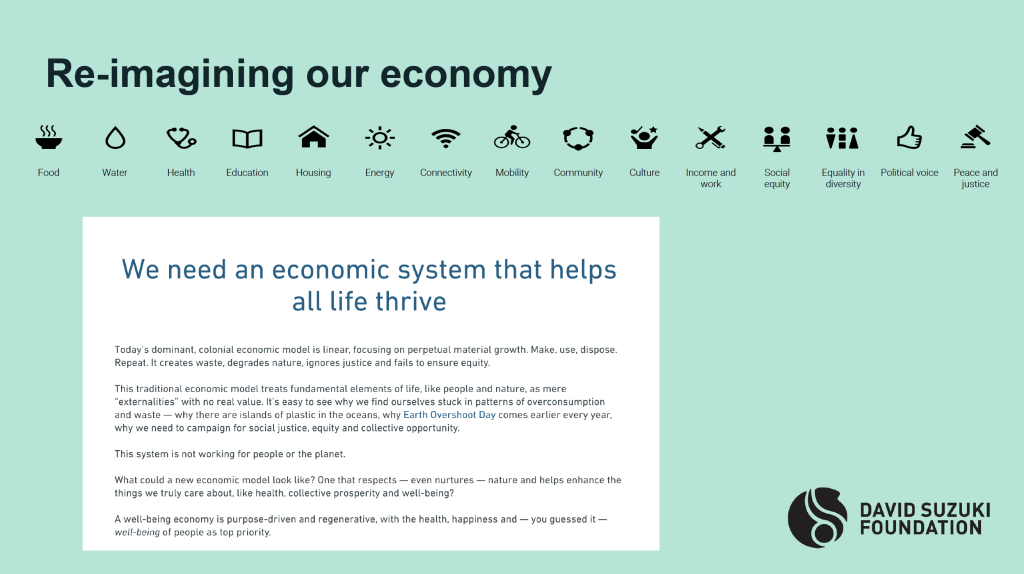
How do you change something at that large a scale? Think global, act local: municipalities have a lot of power. Malkeet presented greater detail on how municipalities can accomplish a great deal through energy, public transit, greenspace, etc. She also provided inspiring examples of successful change the community level. We can learn more about the issues and what can be done and how to do it with the help of the David Suzuki Foundation’s guide ‘Your Voice at the Table.’
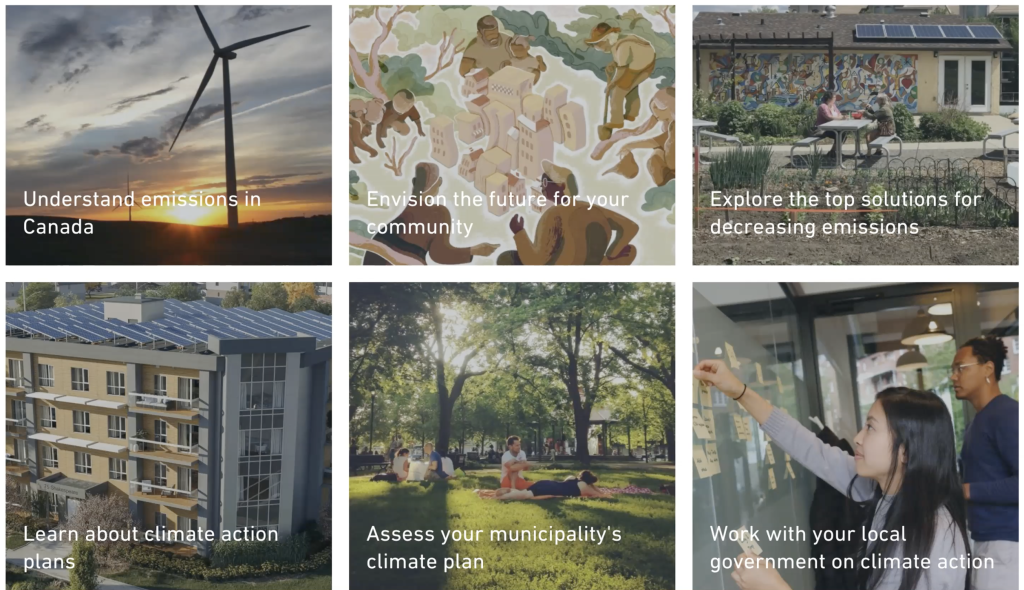
Working to envision the future of the community needs to include the residents; the experts are the folks in these communities who are living these realities.
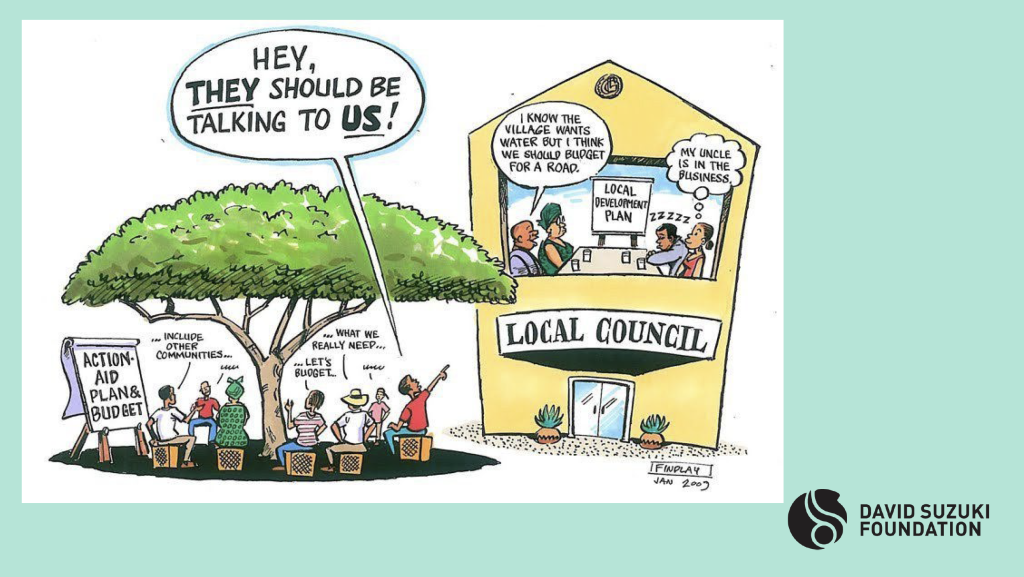
Solutions Discovery Team Presentations
Key team members from the categories Emergency Preparedness, Energy, Food and Workforce Development introduced team members and mentors and presented their overall objectives.

After an overview of how the issues affect or could affect the community, needs, challenges and possibilities, each group shared suggested solutions and potential future actions. Presentations included practical information about capital and operating costs, plus concrete steps to move ideas forward, organized into one-year goal-focused graduated action plans.
Breakout Groups
After the presentations event attendees split up into breakout groups lead by the category groups and mentors. The purpose of these groups is to discuss issues and brainstorm ideas.
Quick Takeaways from Breakout Teams
Emergency Preparedness and Resilience Hub:
There was a suggestion to ally with the City of Toronto Green Champions Program as a neutral way to share a common framework and collaborative space. This would make a great foundation.
Energy and Buildings:
1) Are the buildings worth saving? The answer is they have to be as there are too many people to look at relocating.
2) Consider expanding the scope from buildings to a district solution — more impactful and holistic.
3) Define the goal more clearly to lead to clearer solutions.
An immediate next step would be to start engaging building owners as they are essential to success.
Local Food Pilot Project:
Validation of ideas, collaborating, leveraging resources. What else can be included in the research to narrow down and address needs and how it can be scaled for the community?
Workforce Development:
Key takeaway: For the pilot project to fulfill its potential, it needs to include the people whose basic needs have been met so the project can focus on fully engaging in the program when it is ready to launch.
A question arose around how workforce development aligns with climate change. There is an increasing need for people with climate or environment-related education and experience. There is a huge amount of current and potential talent lying dormant in communities like St. James Town. Newcomers are struggling to enter the workforce.
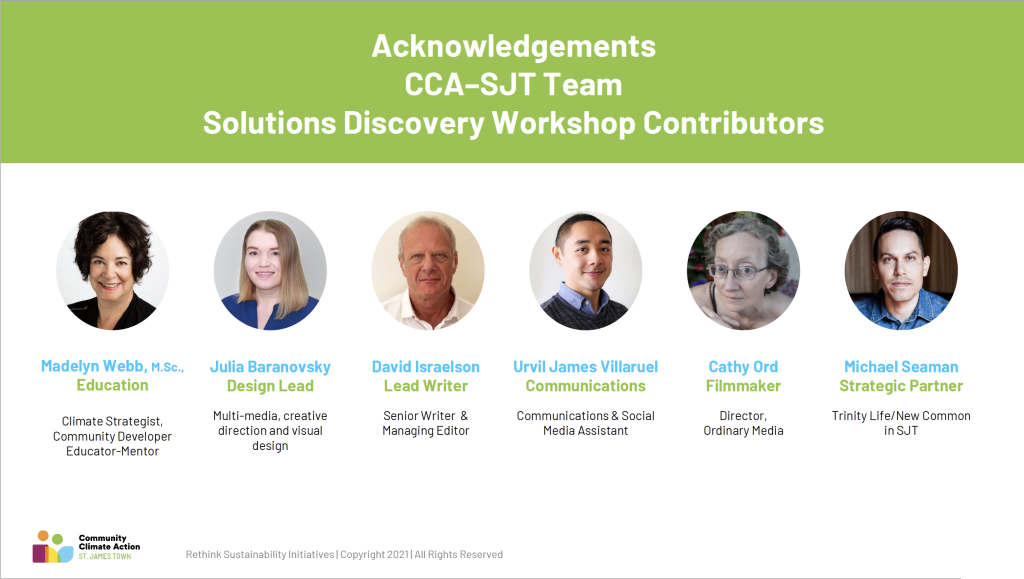
Wrap-up
Yasmin Glanville wrapped up the discussion by acknowledging the main team members and they opened things up for free discussion. There were several questions and additional comments and encouragement from our team members and mentors.
Thank you to everyone for their contribution. We remind attendees if they want to be more involved in St. James Town Community Climate Action or the Solution Discovery Groups,
Please reach out to us via the contact form.

